Mapping and targeted viral activation of pancreatic nerves in mice reveal their roles in the regulation of glucose metabolism
- PMID: 35835995
- PMCID: PMC9669304
- DOI: 10.1038/s41551-022-00909-y
Mapping and targeted viral activation of pancreatic nerves in mice reveal their roles in the regulation of glucose metabolism
Abstract
A lack of comprehensive mapping of ganglionic inputs into the pancreas and of technology for the modulation of the activity of specific pancreatic nerves has hindered the study of how they regulate metabolic processes. Here we show that the pancreas-innervating neurons in sympathetic, parasympathetic and sensory ganglia can be mapped in detail by using tissue clearing and retrograde tracing (the tracing of neural connections from the synapse to the cell body), and that genetic payloads can be delivered via intrapancreatic injection to target sites in efferent pancreatic nerves in live mice through optimized adeno-associated viruses and neural-tissue-specific promoters. We also show that, in male mice, the targeted activation of parasympathetic cholinergic intrapancreatic ganglia and neurons doubled plasma-insulin levels and improved glucose tolerance, and that tolerance was impaired by stimulating pancreas-projecting sympathetic neurons. The ability to map the peripheral ganglia innervating the pancreas and to deliver transgenes to specific pancreas-projecting neurons will facilitate the examination of ganglionic inputs and the study of the roles of pancreatic efferent innervation in glucose metabolism.
© 2022. The Author(s), under exclusive licence to Springer Nature Limited.
Conflict of interest statement
Competing interests
S.A.S is a named inventor of the patent ‘Compositions and methods to modulate cell activity’ (US9399063B2). S.A.S. and M.G.K. are co-founders of Redpin Therapeutics, and consult for and have equity in the company. M.G.K. also consults for Meira GTx. All other authors declare no competing interests.
Figures
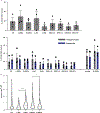
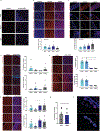
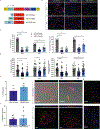
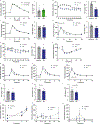




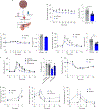

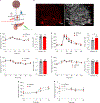

Similar articles
-
Human pancreatic afferent and efferent nerves: mapping and 3-D illustration of exocrine, endocrine, and adipose innervation.Am J Physiol Gastrointest Liver Physiol. 2019 Nov 1;317(5):G694-G706. doi: 10.1152/ajpgi.00116.2019. Epub 2019 Sep 11. Am J Physiol Gastrointest Liver Physiol. 2019. PMID: 31509431
-
Locations and innervation of cell bodies of sympathetic neurons projecting to the gastrointestinal tract in the rat.Arch Histol Cytol. 2001 Aug;64(3):281-94. doi: 10.1679/aohc.64.281. Arch Histol Cytol. 2001. PMID: 11575424
-
Localization of sympathetic and parasympathetic neurons innervating pancreas and spleen in the cat.J Auton Nerv Syst. 1996 Jun 10;59(1-2):12-6. doi: 10.1016/0165-1838(95)00136-0. J Auton Nerv Syst. 1996. PMID: 8816360
-
Visceral nerves: vagal and sympathetic innervation.JPEN J Parenter Enteral Nutr. 2008 Sep-Oct;32(5):569-71. doi: 10.1177/0148607108321705. JPEN J Parenter Enteral Nutr. 2008. PMID: 18753395 Review.
-
Autonomic pathways regulating pancreatic exocrine secretion.Auton Neurosci. 2007 Apr 30;133(1):19-34. doi: 10.1016/j.autneu.2006.10.001. Epub 2006 Nov 17. Auton Neurosci. 2007. PMID: 17113358 Review.
Cited by
-
Optogenetic approaches for neural tissue regeneration: A review of basic optogenetic principles and target cells for therapy.Neural Regen Res. 2026 Feb 1;21(2):521-533. doi: 10.4103/NRR.NRR-D-24-00685. Epub 2025 Feb 24. Neural Regen Res. 2026. PMID: 39995064 Free PMC article.
-
Magnetogenetic cell activation using endogenous ferritin.bioRxiv [Preprint]. 2024 Apr 25:2023.06.20.545120. doi: 10.1101/2023.06.20.545120. bioRxiv. 2024. PMID: 37786709 Free PMC article. Preprint.
-
Optogenetic stimulation of vagal nerves for enhanced glucose-stimulated insulin secretion and β cell proliferation.Nat Biomed Eng. 2024 Jul;8(7):808-822. doi: 10.1038/s41551-023-01113-2. Epub 2023 Nov 9. Nat Biomed Eng. 2024. PMID: 37945752 Free PMC article.
-
The Sympathetic-Immune Milieu in Metabolic Health and Diseases: Insights from Pancreas, Liver, Intestine, and Adipose Tissues.Adv Sci (Weinh). 2024 Feb;11(8):e2306128. doi: 10.1002/advs.202306128. Epub 2023 Dec 1. Adv Sci (Weinh). 2024. PMID: 38039489 Free PMC article. Review.
-
Characterization of single neurons reprogrammed by pancreatic cancer.Nature. 2025 Apr;640(8060):1042-1051. doi: 10.1038/s41586-025-08735-3. Epub 2025 Feb 17. Nature. 2025. PMID: 39961335 Free PMC article.
References
-
- Grapin-Botton A Ductal cells of the pancreas. Int. J. Biochem. Cell Biol. 37, 504–510 (2005). - PubMed
-
- Guenat E et al. Counterregulatory responses to hypoglycemia in patients with glucokinase gene mutations. Diabetes Metab. 26, 377–384 (2000). - PubMed
-
- Thorens B Neural regulation of pancreatic islet cell mass and function. Diabetes Obes. Metab. 16, 87–95 (2014). - PubMed
-
- Yamamoto H, Nagai K & Nakagawa H Bilateral lesions of the SCN abolish lipolytic and hyperphagic responses to 2DG. Physiol. Behav. 32, 1017–1020 (1984). - PubMed
Publication types
MeSH terms
Substances
Grants and funding
LinkOut - more resources
Full Text Sources
Research Materials

